
Egypt
What can i say...IM so FASCINATED by this PLACE! Well mostly Ancient Egypt. Egypt enjoys a unique geographical location. It is an Arab-African country situated on the north-eastern corner of the African continent. Due to its singular geographical situation, Egypt has always been a connecting link between the world’s continents. Although the country’s position was affected following the discovery of the Cape of Good Hope route, it later regained its vital role after the creation of the Suez Canal.Egypt, the land of the Pharaohs, is unique. No where else on earth can you find the wealth of antiquities, the pyramids and the vast temples and monuments.
Egypt is probably the world's oldest civilization having emerged from the Nile Valley around 3,100 BC, historically. Early Greeks, Romans and others went there just for fun, and to see the wonders of some of mankind's earliest triumphs. But Egypt is much more than Pyramids and monuments.For thousands of years, it has been the playground of emperors and kings.
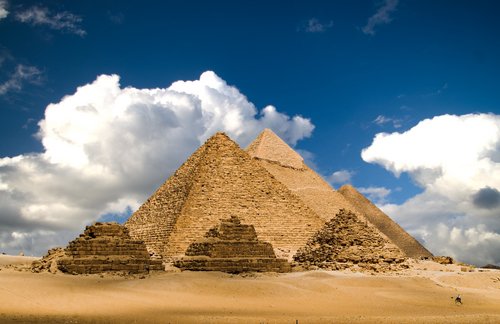
the Great Pyramid of Giza
The Great Pyramid of Giza (also called the Pyramid of Khufu and the Pyramid of Cheops) is the oldest and largest of the three pyramids in the Giza Necropolis bordering what is now El Giza, Egypt. It is the oldest of the Seven Wonders of the Ancient World, and the only one to remain largely intact. Egyptologists believe that the pyramid was built as a tomb for fourth dynasty Egyptian Pharaoh Khufu (Cheops in Greek) over an approximately 20 year period concluding around 2560 BC. Initially at 146.5 metres (480.6 ft), the Great Pyramid was the tallest man-made structure in the world for over 3,800 years, the longest period of time ever held for such a record.

the Great Sphinx of Giza
The Great Sphinx of Giza (The Terrifying One), commonly referred to as the Sphinx, is a statue of a reclining or couchant sphinx (a mythical creature with a lion's body and a human head) that stands on the Giza Plateau on the west bank of the Nile in Giza, Egypt. It is the largest monolith statue in the world, standing 73.5 metres long, 6 metres wide, and 20.22 m high. It is the oldest known monumental sculpture, and is commonly believed to have been built by ancient Egyptians of the Old Kingdom during the reign of the pharaoh Khafra.

Luxor
As the site of the Ancient Egyptian city of Thebes, the great capital of Egypt during the New Kingdom, and the glorious city of the god Amon-Ra. Luxor has frequently been characterized as the "world's greatest open air museum", as the ruins of the temple complexes at Karnak and Luxor stand within the modern city. Immediately opposite, across the River Nile, lie the monuments, temples and tombs on the West Bank Necropolis, which include the Valley of the Kings and Valley of the Queens.

Valley of the Kings
The Valley of the Kings, less often called the Valley of the Gates of the Kings, is a valley in Egypt where, for a period of nearly 500 years from the 16th to 11th century BC, tombs were constructed for the Pharaohs and powerful nobles of the New Kingdom (the Eighteenth to the Twentieth Dynasties of Ancient Egypt). The valley stands on the west bank of the Nile, opposite Thebes (modern Luxor), within the heart of the Theban Necropolis. The wadi consists of two valleys, East Valley (where the majority of the royal tombs are situated) and West Valley.
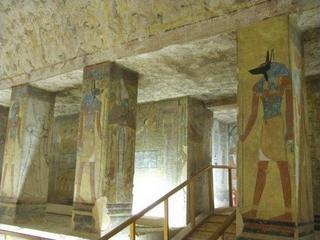



Exteror of King Tut's Tomb!

Sharm el-Sheikh
The simplicity of sun, sea and sand. The luxury of five-star hotels, water sports, shopping and entertainment. This is Sharm el-Sheikh, one of the most accessible and developed tourist resort communities on the Sinai peninsula. Let your eyes be tantalized by the white sandy beaches and endless desert landscape, which contrast with the crystal clear blue water of the Sinai peninsula. Sharm El Sheikh has been heralded as "The City of Peace" It is also noted for its sulphur springs, which are considered cures for those suffering from rheumatic and skin diseases. The morphology of Sharm El Sheikh's coastline is unique. Isnt it BEAUTIFUL!!!
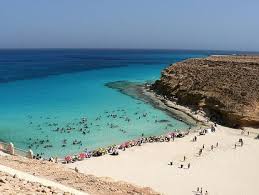

the Museum of Cairo
The Egyptian Museum of Antiquities contains many important pieces of ancient Egyptian history. It houses the world’s largest collection of Pharaonic antiquities, and many treasures of King Tutankhamen. It has 120,000 items, with a representative amount on display, the remainder in storerooms.
King Tutankhamen
Unlike many tombs discovered in Egypt, that of King Tutankhamen was found mostly intact. Inside the tomb there was a large collection of artifacts used throughout the King’s life. These artifacts ranged from a decorated chest, which was most likely used as a closet or suitcase, two ivory and gold bracelets, necklaces, and other decorative jewelry, to alabaster vases and flasks. The tomb was also home to many weapons and instruments used by the King. Although the tomb held over 3,500 artifacts, the tomb was not found completely intact. In fact, there had been at least two robberies of the tomb, perhaps soon after Tutankhamun's burial.
The best known artifact in King Tutankhamun’s tomb is the famous Gold Mask, which rested over the bandages that were wrapped around the King’s face.



other Pharaohs
The remains of many famous Pharaohs are stored in the Egyptian Museum. One of these is Pharaoh Ramses III, who was an extremely skilled warrior. Usimare Ramesses III was the second Pharaoh of the Twentieth Dynasty and is considered to be the last great New Kingdom king to wield any substantial authority over Egypt.


For many of the mummified pharaohs, it has been very difficult to determine when they were born, and historians can only estimate a time when they reigned over Egypt. For Amenhotep IV, historians have estimated his reign around 1372 B.C., because they found out when Amenhotep IV's father, Amenhotep III died. Also, that Amenhotep IV's tomb inscribed five names he gave himself and one of them, Golden Horus, proves that he was crowned on the bank of the Nile, his father's favorite domain. Before he became pharaoh, he was already married to Nefertiti. When Amenhotep IV did become pharaoh, he destroyed the religion of Amun. He did this because he wanted to start his own new religion of Aten, the sun, which is pictured as a disc that sends out rays ending in hands.


Historians believe Sneferu was the first king of the Fourth Dynasty. The year he started his reign was around 2620 B.C. Sneferu appears to have been a fair and just king, and seems to have deserved his chosen name of Master of Justice or Truth. Sneferu, like many other kings, built many temples and structures.
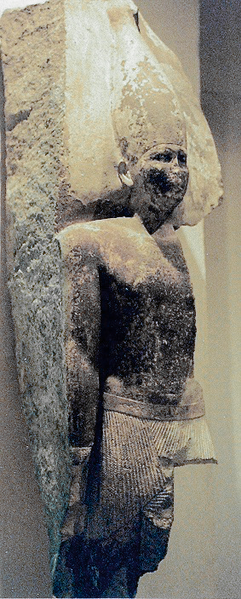
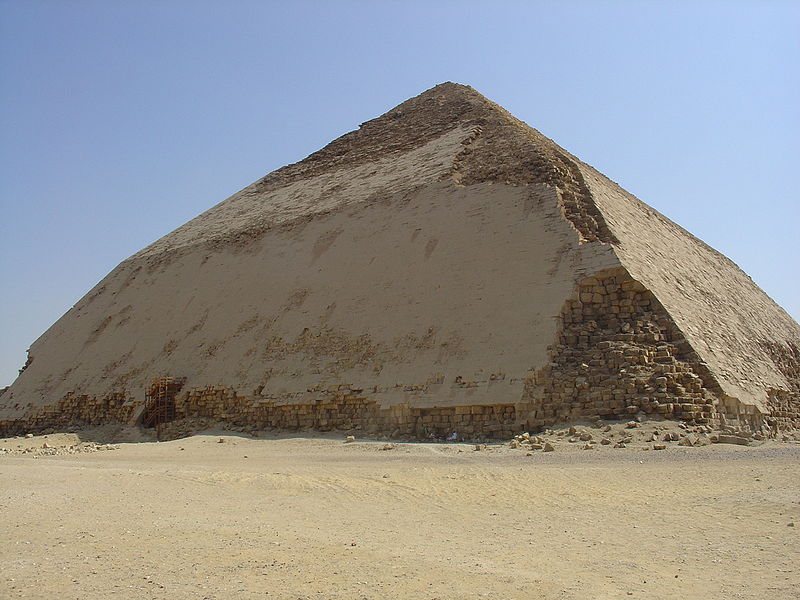
Snefru's Bent Pyramid in Dahshur
Many pharaohs chose coronation names and they all seemed to be alike. For example, Sneferu, Tutankhamun and Amenhotep all had the name "Golden Horus".
______________________________________
Egypt: The Land of the Pharohs.
Its just seems like such an interesting place to go! Im really excited to walk through "The Valley of the Kings" and go close up to a Pyramid and even ride a Camel LOL Please God let me win the LOTTO! lol
Maa Al-salama,
Claudz
xx
Egypt is probably the world's oldest civilization having emerged from the Nile Valley around 3,100 BC, historically. Early Greeks, Romans and others went there just for fun, and to see the wonders of some of mankind's earliest triumphs. But Egypt is much more than Pyramids and monuments.For thousands of years, it has been the playground of emperors and kings.

the Great Pyramid of Giza
The Great Pyramid of Giza (also called the Pyramid of Khufu and the Pyramid of Cheops) is the oldest and largest of the three pyramids in the Giza Necropolis bordering what is now El Giza, Egypt. It is the oldest of the Seven Wonders of the Ancient World, and the only one to remain largely intact. Egyptologists believe that the pyramid was built as a tomb for fourth dynasty Egyptian Pharaoh Khufu (Cheops in Greek) over an approximately 20 year period concluding around 2560 BC. Initially at 146.5 metres (480.6 ft), the Great Pyramid was the tallest man-made structure in the world for over 3,800 years, the longest period of time ever held for such a record.

the Great Sphinx of Giza
The Great Sphinx of Giza (The Terrifying One), commonly referred to as the Sphinx, is a statue of a reclining or couchant sphinx (a mythical creature with a lion's body and a human head) that stands on the Giza Plateau on the west bank of the Nile in Giza, Egypt. It is the largest monolith statue in the world, standing 73.5 metres long, 6 metres wide, and 20.22 m high. It is the oldest known monumental sculpture, and is commonly believed to have been built by ancient Egyptians of the Old Kingdom during the reign of the pharaoh Khafra.

Luxor
As the site of the Ancient Egyptian city of Thebes, the great capital of Egypt during the New Kingdom, and the glorious city of the god Amon-Ra. Luxor has frequently been characterized as the "world's greatest open air museum", as the ruins of the temple complexes at Karnak and Luxor stand within the modern city. Immediately opposite, across the River Nile, lie the monuments, temples and tombs on the West Bank Necropolis, which include the Valley of the Kings and Valley of the Queens.

Valley of the Kings
The Valley of the Kings, less often called the Valley of the Gates of the Kings, is a valley in Egypt where, for a period of nearly 500 years from the 16th to 11th century BC, tombs were constructed for the Pharaohs and powerful nobles of the New Kingdom (the Eighteenth to the Twentieth Dynasties of Ancient Egypt). The valley stands on the west bank of the Nile, opposite Thebes (modern Luxor), within the heart of the Theban Necropolis. The wadi consists of two valleys, East Valley (where the majority of the royal tombs are situated) and West Valley.




Exteror of King Tut's Tomb!

Sharm el-Sheikh
The simplicity of sun, sea and sand. The luxury of five-star hotels, water sports, shopping and entertainment. This is Sharm el-Sheikh, one of the most accessible and developed tourist resort communities on the Sinai peninsula. Let your eyes be tantalized by the white sandy beaches and endless desert landscape, which contrast with the crystal clear blue water of the Sinai peninsula. Sharm El Sheikh has been heralded as "The City of Peace" It is also noted for its sulphur springs, which are considered cures for those suffering from rheumatic and skin diseases. The morphology of Sharm El Sheikh's coastline is unique. Isnt it BEAUTIFUL!!!

the Museum of Cairo
The Egyptian Museum of Antiquities contains many important pieces of ancient Egyptian history. It houses the world’s largest collection of Pharaonic antiquities, and many treasures of King Tutankhamen. It has 120,000 items, with a representative amount on display, the remainder in storerooms.
King Tutankhamen
Unlike many tombs discovered in Egypt, that of King Tutankhamen was found mostly intact. Inside the tomb there was a large collection of artifacts used throughout the King’s life. These artifacts ranged from a decorated chest, which was most likely used as a closet or suitcase, two ivory and gold bracelets, necklaces, and other decorative jewelry, to alabaster vases and flasks. The tomb was also home to many weapons and instruments used by the King. Although the tomb held over 3,500 artifacts, the tomb was not found completely intact. In fact, there had been at least two robberies of the tomb, perhaps soon after Tutankhamun's burial.
The best known artifact in King Tutankhamun’s tomb is the famous Gold Mask, which rested over the bandages that were wrapped around the King’s face.



other Pharaohs
The remains of many famous Pharaohs are stored in the Egyptian Museum. One of these is Pharaoh Ramses III, who was an extremely skilled warrior. Usimare Ramesses III was the second Pharaoh of the Twentieth Dynasty and is considered to be the last great New Kingdom king to wield any substantial authority over Egypt.


For many of the mummified pharaohs, it has been very difficult to determine when they were born, and historians can only estimate a time when they reigned over Egypt. For Amenhotep IV, historians have estimated his reign around 1372 B.C., because they found out when Amenhotep IV's father, Amenhotep III died. Also, that Amenhotep IV's tomb inscribed five names he gave himself and one of them, Golden Horus, proves that he was crowned on the bank of the Nile, his father's favorite domain. Before he became pharaoh, he was already married to Nefertiti. When Amenhotep IV did become pharaoh, he destroyed the religion of Amun. He did this because he wanted to start his own new religion of Aten, the sun, which is pictured as a disc that sends out rays ending in hands.


Historians believe Sneferu was the first king of the Fourth Dynasty. The year he started his reign was around 2620 B.C. Sneferu appears to have been a fair and just king, and seems to have deserved his chosen name of Master of Justice or Truth. Sneferu, like many other kings, built many temples and structures.


Snefru's Bent Pyramid in Dahshur
Many pharaohs chose coronation names and they all seemed to be alike. For example, Sneferu, Tutankhamun and Amenhotep all had the name "Golden Horus".
______________________________________
Egypt: The Land of the Pharohs.
Its just seems like such an interesting place to go! Im really excited to walk through "The Valley of the Kings" and go close up to a Pyramid and even ride a Camel LOL Please God let me win the LOTTO! lol
Maa Al-salama,
Claudz
xx
you never know.. one day your you and than the next your a millionaire! keep up the blogging! i'm learning a lot about places i've only seen on tv shows like getaway. he he he.
ReplyDeleteLOL im learning quite alot too :) :) hopefully i have time to do one during the day before my boss gets back or itll be after work :( i enjoy it! hahaha
ReplyDelete